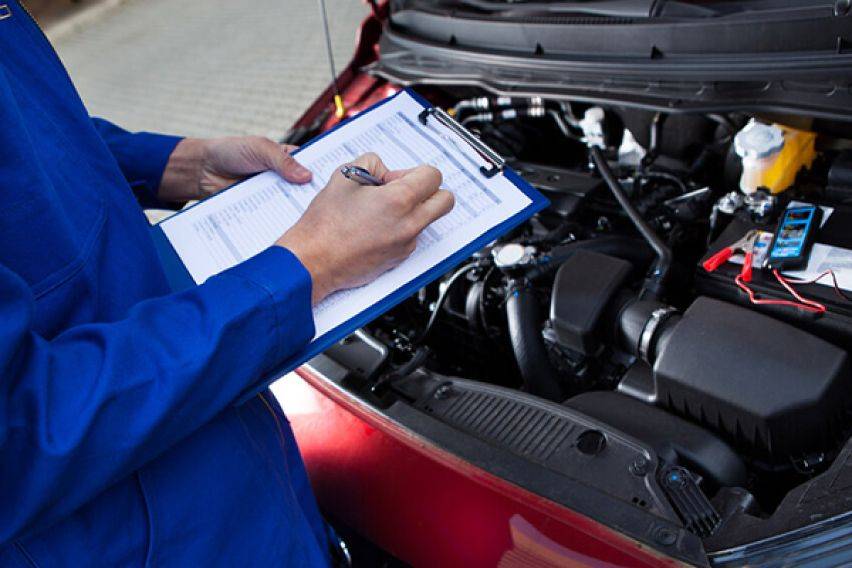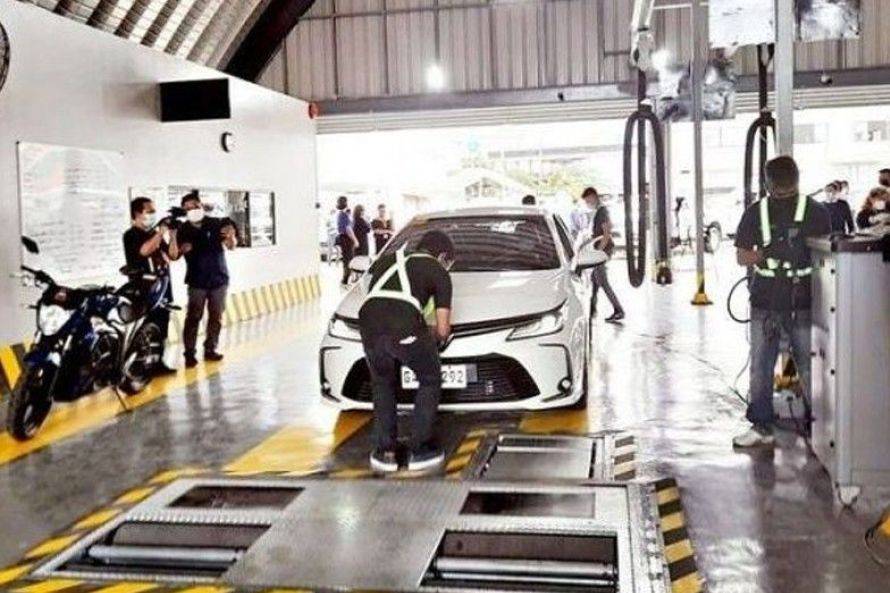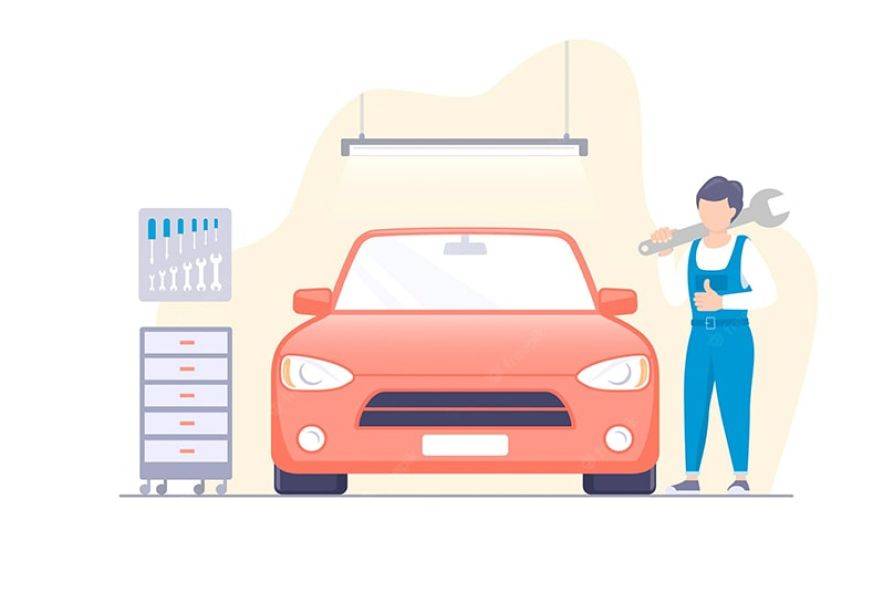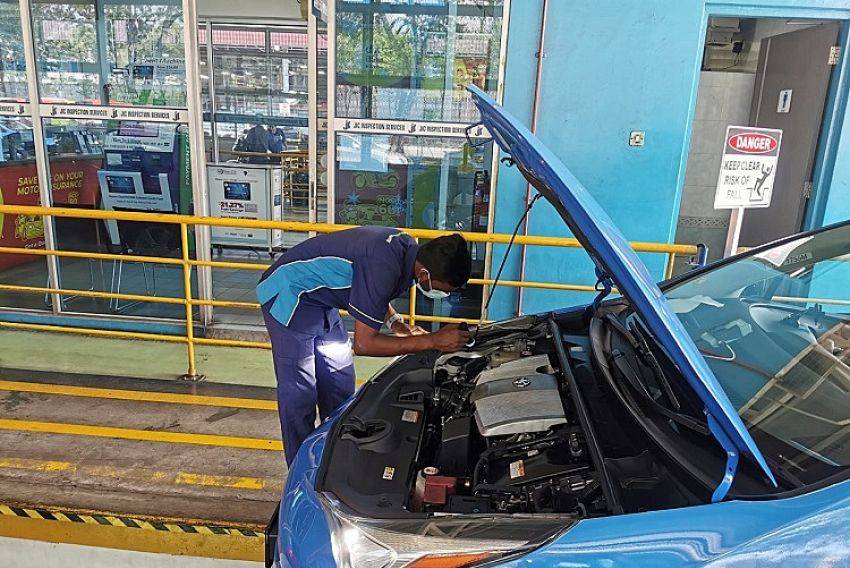Everything you need to know about MVIR (Motor Vehicle Inspection Report) - Part II

- KEY TAKEAWAYS
- What are the prerequisites to get an MVIR?
- Step-by-step guide to getting an MVIR
- What should you do after receiving the Motor Vehicle Inspection Report?
- Vehicle inspection in detail
- How to schedule a Motor Vehicle Inspection?
- A little more about MVIR and MVIS (Motor Vehicle Inspection Report/System)
In Part I of the ‘Everything you need to know about MVIR’ series, we discussed the very basics of the Motor Vehicle Inspection Report, aka MVIR, elaborating on the following topics:
KEY TAKEAWAYS
What to do if your car does not pass the MVIR?
If the issue is with a particular part, make sure it is fixed or replaced. If problems arise during the emission test, try changing the oil and inspecting the engine and exhaust system for any blockage.From where should a user get a Motor Vehicle Inspection Report form?
The Motor Vehicle Inspection Report form is available for free at the LTO office and can also be downloaded from the LTO official website. So, do not buy the form; it would be a waste of money.Does a new vehicle require a Motor Vehicle Inspection Report?
Yes. Be it a new or old vehicle, MVIR is a must.- What is MVIR?
- Benefits of MVIR
- MVIR form
- Tests conducted under MVIR
- Fees associated with MVIR
Taking the Motor Vehicle Inspection Report topic further, today we’ll shed light on the following aspects of MVIR:
- What are the prerequisites to get an MVIR?
- Procedure to acquire an MVIR
- Vehicle inspection detailed
- How to schedule for motor vehicle inspection
So, without further ado, let's explore the world of motor vehicle inspection in the Philippines a bit more.

What are the prerequisites to get an MVIR?
When you head out to the LTO for any task, be it new car registration, registration renewal, car title transfer, collecting OR/CR, or its duplicate copy, there are always some papers you need to carry. The same is the case with MVIR; however, the requirements depend on the reason for the inspection. For instance, it can be for the renewal of MV registration, inspection of an apprehended motor vehicle, or any other miscellaneous registration transaction.
|
For renewal of motor vehicle registration |
|
|
For apprehended motor vehicles requiring inspection |
|
|
For miscellaneous registration transactions |
|
|
For transfer of ownership and change in engine, colour, chassis, and body configuration |
|
|
For dropping & substitution |
|
Step-by-step guide to getting an MVIR
As per LTO operating guidelines for Private Motor Vehicle Inspection Centers, here’s how one can acquire an MVIR. Note that there might be a few changes to the LTO procedure, but this will still give you a brief overview. So, let’s begin:
Step 1: Go to the Motor Vehicle Inspection Centre (MVIC), Extension Office (EO), or an authorized LTO District Office (DO).
Step 2: Submit all the required documents for the needed vehicle inspection.
Step 3: After accepting the documents, the assigned officer verifies the paperwork.
Step 4: Once everything is verified and passed, you will be asked to pay the fee (to the cashier) and receive the official receipt.

Step 5: You can now visit a Private Motor Vehicle Inspection Centre (PMVIC) with the official receipt and the concerned vehicle.
Step 6: At the PMVIC, the vehicle’s registration status in the LTO’s Land Transportation Management System (LTMS) will be checked. It can be done in any one of the following ways:
- RFID scanner: The RFID tag on the vehicle’s LTO sticker will be scanned.
- QR code: A barcode scanner will scan the QR code on the vehicle’s LTO sticker.
- Manual input: While the above two methods require the use of a machine, this one is a fully manual method to check whether or not the concerned vehicle is registered in the LTMS. It involves getting the vehicle’s license plate number checked in the LTMS database.
Note that if the vehicle is not registered with LTMS, you will need to go to the nearest LTO district office before proceeding with the MVIR process.
Step 7: Present your OR/CR and Vehicle Identification Number (VIN) to the encoder windows; next, you'll receive a queue number.
Note that users can schedule an appointment online as well, which will allow them to proceed straight to payment.
Step 8: Next, you’ll be required to make necessary payments, which can be done in the following ways:
- Cash: Pay cash at the PMVIC payment window
- Debit/Credit card: Pay through your credit or debit card
- Bayad Center: Settle payments via third-party payment partners like LBC Payment Centers and Bayad Centers
Step 9: After making the payment, it’s time to hand over the vehicle to the designated PMVIC driver for inspection (discussed in detail below). As for you, relax at the customer lounge.
Step 10: The result is sent to the LTO database through the Value Added Service Provider. Your vehicle's Motor Vehicle Inspection Status report will also be printed out.
Note that the result is determined via a point system that awards the vehicle either a ‘Pass’ or a ‘Fail.’ This report is valid for just 60 days from the date of inspection.

What should you do after receiving the Motor Vehicle Inspection Report?
The vehicle inspection report can either say ‘Pass’ or ‘Fail.’ If it is a ‘Fail,’ the owner will receive a list of things that need to be changed or replaced. Once rectified, you’ll need to bring back the car for testing. If it is a ‘Pass,’ you may head straight to the nearby LTO office and proceed with your task of vehicle registration, duplicate ORCR acquisition, or others.
Also Read: Don't get caught off guard: A complete guide to car registration renewal in the Philippines
Vehicle inspection in detail
To acquire a Motor Vehicle Inspection Report (MVIR), a vehicle must undergo several testing and inspection processes. While we discussed the tests in detail in Part I, we’ll examine the inspection process here.
The MVIS examination comprises two segments: the above-carriage inspection and the under-carriage inspection. Let's begin by examining the above-carriage checks.
Above-carriage inspection encompasses

- Inspection of the vehicle's exterior, including the body, glass surfaces, lights, and more.
- It extends to the interior, ensuring its cleanliness and operational state.
- The body inspection involves assessing the rust on the panels and overall intactness.
- Loose panels and patched areas are unacceptable.
- Functional headlights, along with the units, are properly aligned and unobstructed.
- Turn signals, license plate lights, taillights, and reverse lights must be properly working.
- Clean windshields and windows; any cracks, significant scratches, or repairs result in an automatic failure.
- Functional wipers and well-maintained windshield washers are a prerequisite.
- Tyre inspection involves tread depth and age, with regrooved tyres a big NO.
- The steering wheel should exhibit no undue play, and turning effort must be uniform in both directions.
- The horn's tone and volume must remain consistent when continuously pressed.
- The air-conditioning system should contain the correct refrigerant.
- The exhaust system's noise level must not exceed 99 dB.
- The floorboards are checked for external leaks infiltrating the cabin.
- Inspection extends assessing for wear, damage, or improper repairs; also, every switch and dial must operate smoothly, and the battery must be securely fastened.
Under-carriage inspection

Let's now explore what MVIS inspectors scrutinize beneath the vehicle.
- Inspectors examine various potential leak points, including the radiator, transmission, engine, power steering, hoses, pipes, brake lines, differentials, and dampers.
- Components such as driveshafts, CV joints, linkages, steering mechanisms, and engine mounts must exhibit any vibrations and be securely fastened.
- The chassis's critical junctions and the floor pan must remain free from any signs of degradation.
- For vehicles like pick-ups, conventional SUVs, AUVs, and vans (e.g., Hilux, D-Max, Fortuner, mu-X), inspectors pay particular attention to the frame. They also assess for any damage, deformations, or evidence of cut and welded sections.
- Inspectors evaluate the condition of the springs and handbrake cables and ensure that all nuts and bolts are correctly installed.
- Spare tyre mounts located outside the vehicle must be securely fastened to prevent any risk of detachment.
How to schedule a Motor Vehicle Inspection?
If you need to acquire the Motor Vehicle Inspection Report for your vehicle, you’ll first have to schedule the inspection, which depends on the vehicle’s plate number. The table answers the question:
|
1st week of January, February, & March |
Vehicles with digits 1,2, or 3 in the middle of plate number |
|
2nd week of April, May, & June |
Vehicles with digits 4,5, or 6 in the middle of plate number |
|
3rd week of July & August |
Vehicles with the digit 7 or 8 in the middle of the plate number |
|
4th week of September & October |
Vehicles with the digit 9 or 0 in the middle of the plate number |
Try not to miss the inspection schedule timing, as it would lead to a penalty of PHP 50.
A little more about MVIR and MVIS (Motor Vehicle Inspection Report/System)
We have now concluded our two-part series on ‘Everything you need to know about MVIR.’ However, before we conclude, here are some interesting points about MVIR.
- Securing MVIR is important for a car owner and is one of the many requirements
- The old Motor Vehicle Inspection System has been replaced by a new system (details of which are shared in Part I and Part II of our ‘Everything you need to know about MVIR’ series)
- As of February 11, 2021, if a vehicle fails PMVIC testing, there will be no charge for retesting for 1 year
- An inspection fee of PHP 1,800 may be collected if the vehicle is modified, or has undergone changes related to engine/chassis, colour, Gross Vehicle Weight, etc
- Several Private Motor Vehicle Inspection Centers (PMVIC) have been accredited by LTO across the Philippines to implement the new MVIS successfully
- MVIR applicants now enjoy lower inspection fees, thanks to the LTO Memorandum issued on February 11, 2021
- The MVIR form is available free of charge across LTO branches and its website
- Remember not to play around with the MVIR form; don’t write anything across the inspection or testing sections
Summary
Yes, it might seem like a lot to wrap your head around, but it's all about keeping you and others on the road safe. If any of the stuff we've talked about needs fixing up in your ride, it's smart to hit the shop and get it sorted before you book your MVIR appointment.
Also Read: LTO OR/CR: Get to know the two of the most important docs for your car
Featured Articles
- Latest
- Popular
Recommended Articles For You
Featured Cars
- Latest
- Upcoming
- Popular
Car Articles From Zigwheels
- News
- Article Feature
- Advisory Stories
- Road Test
